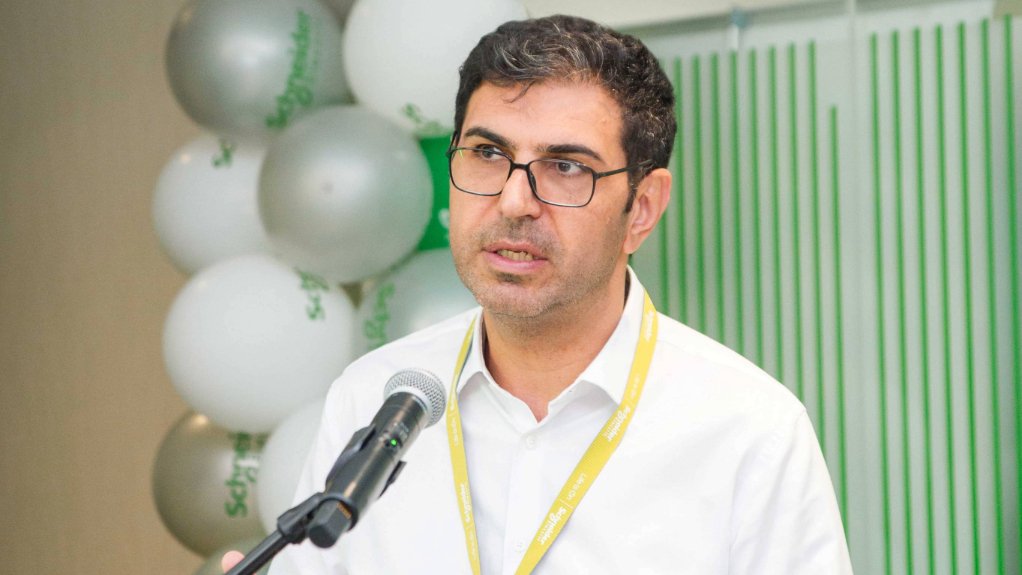The evolution of corrective to conditional based maintenance highlights the value of proactive management
Maintenance has come a long way from the days when we waited for things to break and, thanks to the ever-increasing capabilities of technology, predictive maintenance has become a viable solution for keeping equipment running smoothly and efficiently around the world.
This is according to Suleyman Aydemir, Services VP – Middle East and Africa at Schneider Electric, who notes that 70-80 years ago, the concept of maintenance was all about reacting to problems as they arose and fixing what was broken often at the cost of lost time and productivity.
“This was known as corrective maintenance, which focused on addressing malfunctions. In those years, it was mainly about repairing equipment. Then the concept of preventive maintenance emerged, where the focus was on mechanical maintenance and cleaning to prevent potential failures," says Aydemir.
"In the 1980s and early 1990s, as the electronic industry grew, preventive maintenance evolved to include predictive maintenance. This involved using electronic devices to measure and compare equipment performance, rather than just checking it annually.”
Digital and condition-based maintenance
Over the last four to five years, he explains, industries have been providing predictive maintenance solutions to end users. Now, the revolution in the industry is moving towards digital and condition-based maintenance.
“Instead of going to the asset and manually measuring its status, we use continuous monitoring with digital sensors. The advantage of continuous monitoring is that it captures not just the equipment data, but also the environmental factors affecting it," says Aydemir.
"We measure data from the asset, including temperature and load characteristics. This data is analysed through algorithms to detect if a problem is approaching or has already occurred.”
He explains that when Schneider Electric trains its service engineers, whether they are based locally or in its connected service hubs that monitor data globally, the company’s priority is not just to address the current issues, but also to estimate whether a problem will occur soon – within the next three to six months.
“Traditionally, customers would call us when they had a problem. But with the technology of online monitoring, we can now proactively reach out to customers and inform them that we have detected a potential issue before it becomes a problem. This is an innovative approach that helps increase the lifetime of the assets and minimise the cost of ownership," he says.
Digital twin
Another example that Aydemir highlights is the use of digital twins. Instead of relying on traditional single-line diagrams or paper-based schematics, an entire electrical system can now be embedded into software.
“With the digital twin, you can virtually model changes to your system, such as adding motors, transformers, or increasing loads. The software can then automatically calculate how the system will behave and whether any additional functions or modifications are required,” he says.
“Additionally, the digital twin provides detailed information about the specific components in your system. This eliminates the need to manually check component details and helps you better design and plan for the growth and evolution of your electrical infrastructure.”
The journey from reactive to condition based maintenance (CBM) marks a significant shift in how organisations manage their assets. It is a testament to the advancements in technology and the growing recognition of the value of proactive management.
Article Enquiry
Email Article
Save Article
Feedback
To advertise email advertising@creamermedia.co.za or click here
Press Office
Announcements
What's On
Subscribe to improve your user experience...
Option 1 (equivalent of R125 a month):
Receive a weekly copy of Creamer Media's Engineering News & Mining Weekly magazine
(print copy for those in South Africa and e-magazine for those outside of South Africa)
Receive daily email newsletters
Access to full search results
Access archive of magazine back copies
Access to Projects in Progress
Access to ONE Research Report of your choice in PDF format
Option 2 (equivalent of R375 a month):
All benefits from Option 1
PLUS
Access to Creamer Media's Research Channel Africa for ALL Research Reports, in PDF format, on various industrial and mining sectors
including Electricity; Water; Energy Transition; Hydrogen; Roads, Rail and Ports; Coal; Gold; Platinum; Battery Metals; etc.
Already a subscriber?
Forgotten your password?
Receive weekly copy of Creamer Media's Engineering News & Mining Weekly magazine (print copy for those in South Africa and e-magazine for those outside of South Africa)
➕
Recieve daily email newsletters
➕
Access to full search results
➕
Access archive of magazine back copies
➕
Access to Projects in Progress
➕
Access to ONE Research Report of your choice in PDF format
RESEARCH CHANNEL AFRICA
R4500 (equivalent of R375 a month)
SUBSCRIBEAll benefits from Option 1
➕
Access to Creamer Media's Research Channel Africa for ALL Research Reports on various industrial and mining sectors, in PDF format, including on:
Electricity
➕
Water
➕
Energy Transition
➕
Hydrogen
➕
Roads, Rail and Ports
➕
Coal
➕
Gold
➕
Platinum
➕
Battery Metals
➕
etc.
Receive all benefits from Option 1 or Option 2 delivered to numerous people at your company
➕
Multiple User names and Passwords for simultaneous log-ins
➕
Intranet integration access to all in your organisation




















